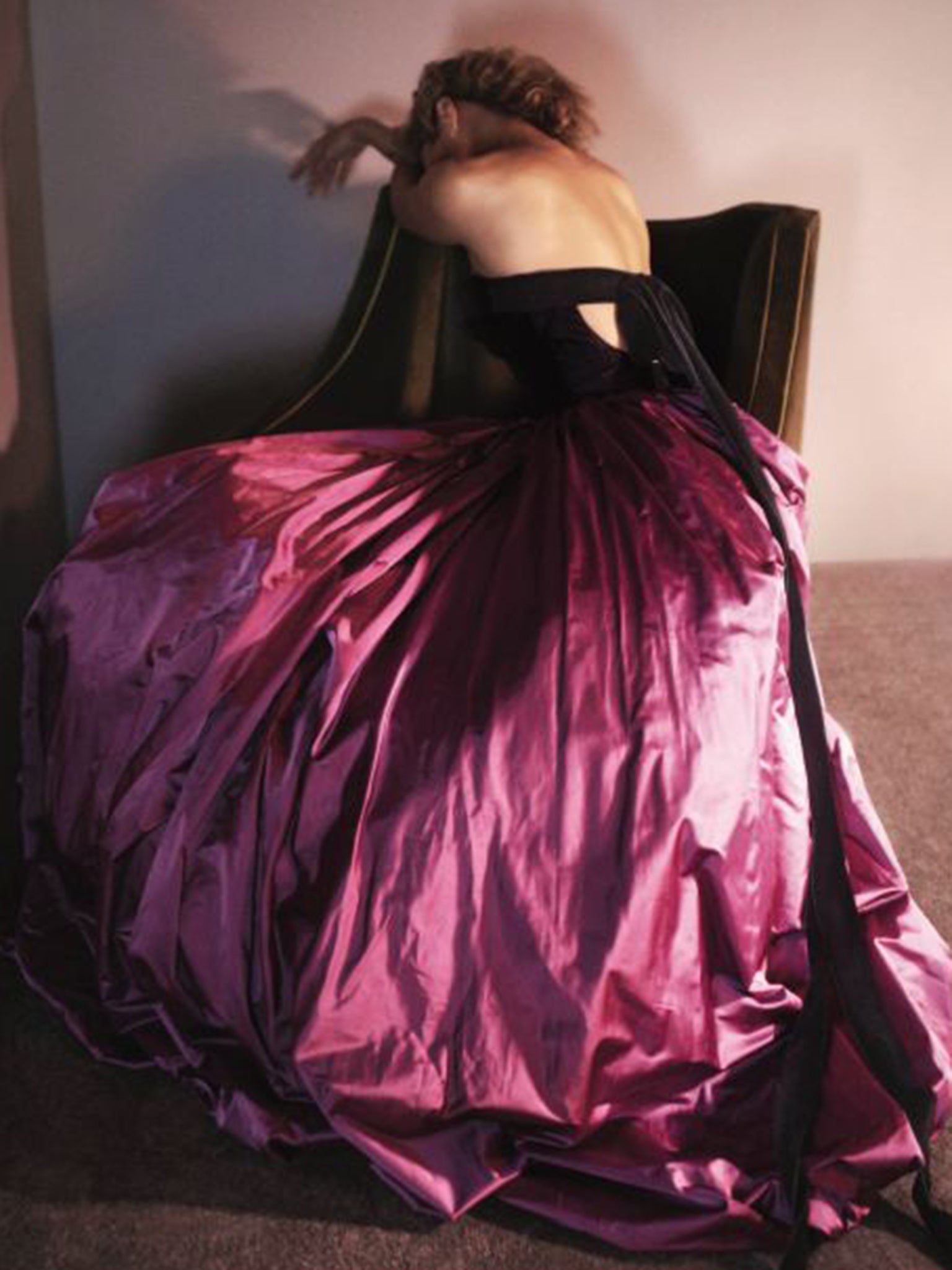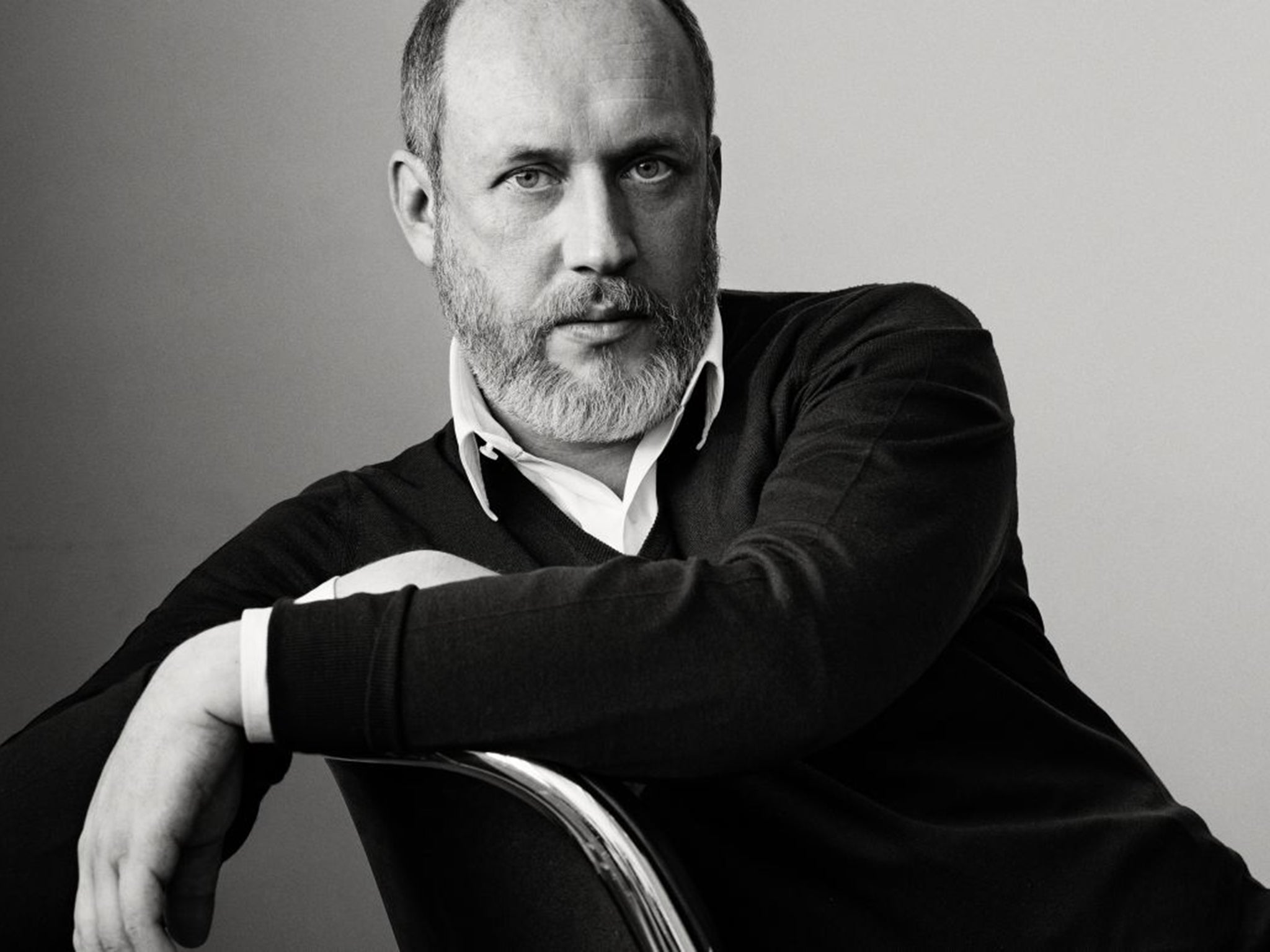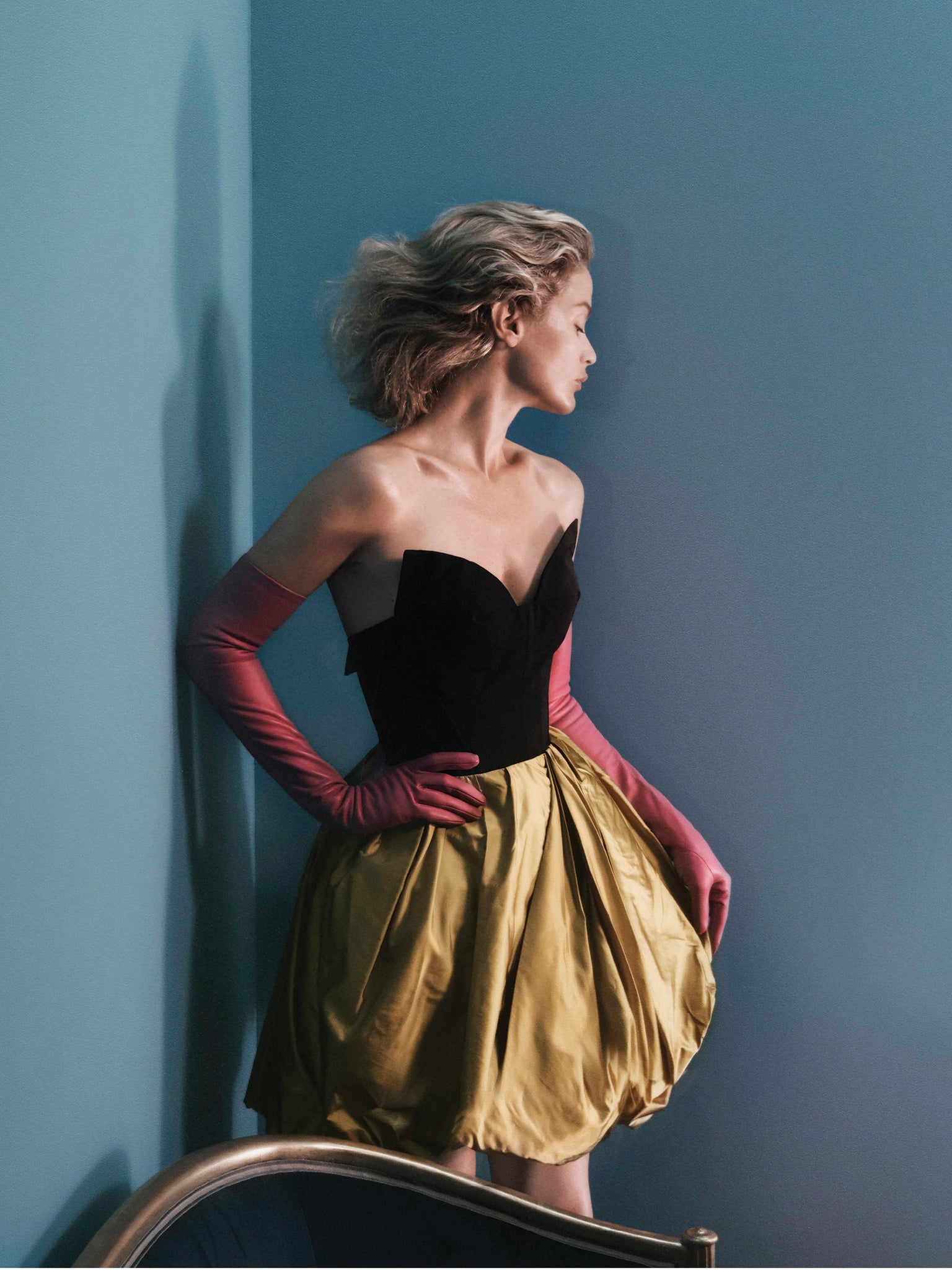Oscar de la Renta's new designer Peter Copping honours the founder - but adds his own panache
Oscar de la Renta is the quintessential American label, but after the death of its founder it's now a Brit, Peter Copping, at the helm. Alexander Fury talks to him about couture, croquis and his upcoming catwalk show

Your support helps us to tell the story
From reproductive rights to climate change to Big Tech, The Independent is on the ground when the story is developing. Whether it's investigating the financials of Elon Musk's pro-Trump PAC or producing our latest documentary, 'The A Word', which shines a light on the American women fighting for reproductive rights, we know how important it is to parse out the facts from the messaging.
At such a critical moment in US history, we need reporters on the ground. Your donation allows us to keep sending journalists to speak to both sides of the story.
The Independent is trusted by Americans across the entire political spectrum. And unlike many other quality news outlets, we choose not to lock Americans out of our reporting and analysis with paywalls. We believe quality journalism should be available to everyone, paid for by those who can afford it.
Your support makes all the difference.Sipping tea in French Vichy checks, bearded of chin and rounded of vowel, the 48-year-old designer Peter Copping neither looks nor sounds like the head of a multi-million dollar American fashion powerhouse. Especially when said house is Oscar de la Renta, costumer of First Ladies, a designer whose work is enshrined in the Smithsonian and whose label is seen as the last remaining bastion of America's once-thriving couture trade. That trade was filled with gregarious men like Bill Blass, Geoffrey Beene and Mr de la Renta, known for filling the wardrobes of polished New York socialites with flounced and ruffled gowns. Of them all, Oscar de la Renta was the most debonair, his dresses the most dramatic.
Oscar de la Renta passed away on 20 October last year, due to complications from cancer, barely a month after his spring/summer 2015 show, and just seven days after Peter Copping's appointment as creative director. Hand-picked by the founder himself, Copping was originally intended to work alongside de la Renta, but, as Copping himself wrote in notes perched on every seat of his debut show in February, "things did not go according to plan".
"It was a very difficult moment for the house," states Copping today, carefully but pragmatically, in the midst of preparations for his sophomore catwalk show, for spring/summer 2016, to be presented on Tuesday afternoon. "It was a house in mourning and, even if Oscar had been ill for a number of years and people realised this was coming, it certainly came a little more suddenly than expected… I think it was hard for people in that house to see someone come in and sit in Oscar's office."
Copping's first collection, however, was a triumph. Of course, there was nothing wrong with de la Renta in the first place – he didn't really have to change very much to make it relevant. Despite its Shiny Set antecedents, Oscar de la Renta has managed to retain a striking 21st-century relevance. Worth around £195m, the house opened its first London store in 2013, while at Copping's 2015 show, the musician Taylor Swift sat opposite Mrs Henry Kissinger. Both were wearing Oscar de la Renta, and both looked great.
The show felt a bit like a (successful) marriage: a little old, a little new, a little borrowed. But they ditched the blue – despite the obvious emotion in the room, and the note Copping had left on chairs, he didn't dwell too much on de la Renta's death. "I do think there's something to be said for being British and that spirit of getting on with things," he comments, a little wryly.
British though Copping is, his career was born in France – he's designed for Sonia Rykiel, Louis Vuitton (under Marc Jacobs) and, for five years, was creative director of Nina Ricci. As a student, in 1989, he worked at the house of Christian Lacroix, in the couture salons. "The job that I was given was to draw a final sketch of each outfit being presented and shown. Because, from Christian's original sketch to what was actually presented, there were changes," recalls Copping. "For some of them, the evening dresses, I had to adapt and make them into bridal dresses. When jackets were drawn with pants I had to add different skirts, all to be shown to the couture clients that came in. So, basically, I was sitting alongside Lacroix, observing all the fittings."

Several decades before, Oscar de la Renta himself had done the same for Cristobal Balenciaga. "In interviews when [Oscar] was asked about Balenciaga, he was always really vague," recalls Erika Bearman, who worked alongside de la Renta for the past six years as his senior vice-president of global communications. "He said 'oh I was always picking up pins' or something, but what he was really doing was drawing the lookbook." Or, to borrow couture-speak, croquis, the sketches sent to clients from which to order their wardrobe.
Unlike other American labels, de la Renta was born from a European tradition of couture. Maybe that's why Copping doesn't feel the jolt you'd imagine in uprooting his life from one continent to another (he sold his Paris flat, but kept a holiday home in Normandy he now seldom gets chance to visit). When I ask how he's coping with the transition, he laughs. "One thing that is difficult is dealing with the noise level in restaurants... I think that we're choosing the restaurants we like depending on the noise level!"
Out of restaurants and back in Oscar de la Renta's base on West 42nd Street, next to New York's Public Library, Copping feels at home. "There are lots of different levels of American fashion," he reasons, "but I think the brands like Oscar do have their roots in European fashion. So, in a way, it didn't feel so alien."

You could see that ease in Copping's opening gambit, with its sweeping satin skirts and grosgrain bodices, flirtatious velvet bows and layers of fine lace. It was worked, obviously, but overall had, perhaps, a Parisian rather than Manhattan sensibility. Then again, the pragmatic daywear – all nubby tweeds, Wasp-y bowed blouses and neat, to-the-knee dresses, had a distinct air of Mrs Reagan – the First Lady first dressed by de la Renta – at her most youthful and refined.
"You know a lot of these houses, I think, are very marketing-driven," Copping states – naming other New York designers he asks me not to mention – "but I think in our house they consider the craftsmanship and the way the clothes are made and that process of working with the material in the atelier. It's very important for Alex Bolen to have an in-house atelier." That's not something you'd often hear a designer say of the company CEO. But Bolen is not just a CEO, he's the husband of de la Renta's stepdaughter Eliza, herself the company's executive vice-president. How's that for pressure to deliver?
De la Renta's success makes Copping's task tougher. "That's something that is challenging, but exciting at the same time," he says. "I think it's great that I'm not having to revive a broken house or anything like that, it's doing good business at the moment. I do feel like I want to stay loyal to what the house is known for – but we do have to find new territories and new ways to attract new women. And that's not going to be done in five minutes."
Of course not. Try eleven and a half. That was the length of Copping's first Oscar de la Renta outing, and I suspect it's done just that.
Join our commenting forum
Join thought-provoking conversations, follow other Independent readers and see their replies
Comments